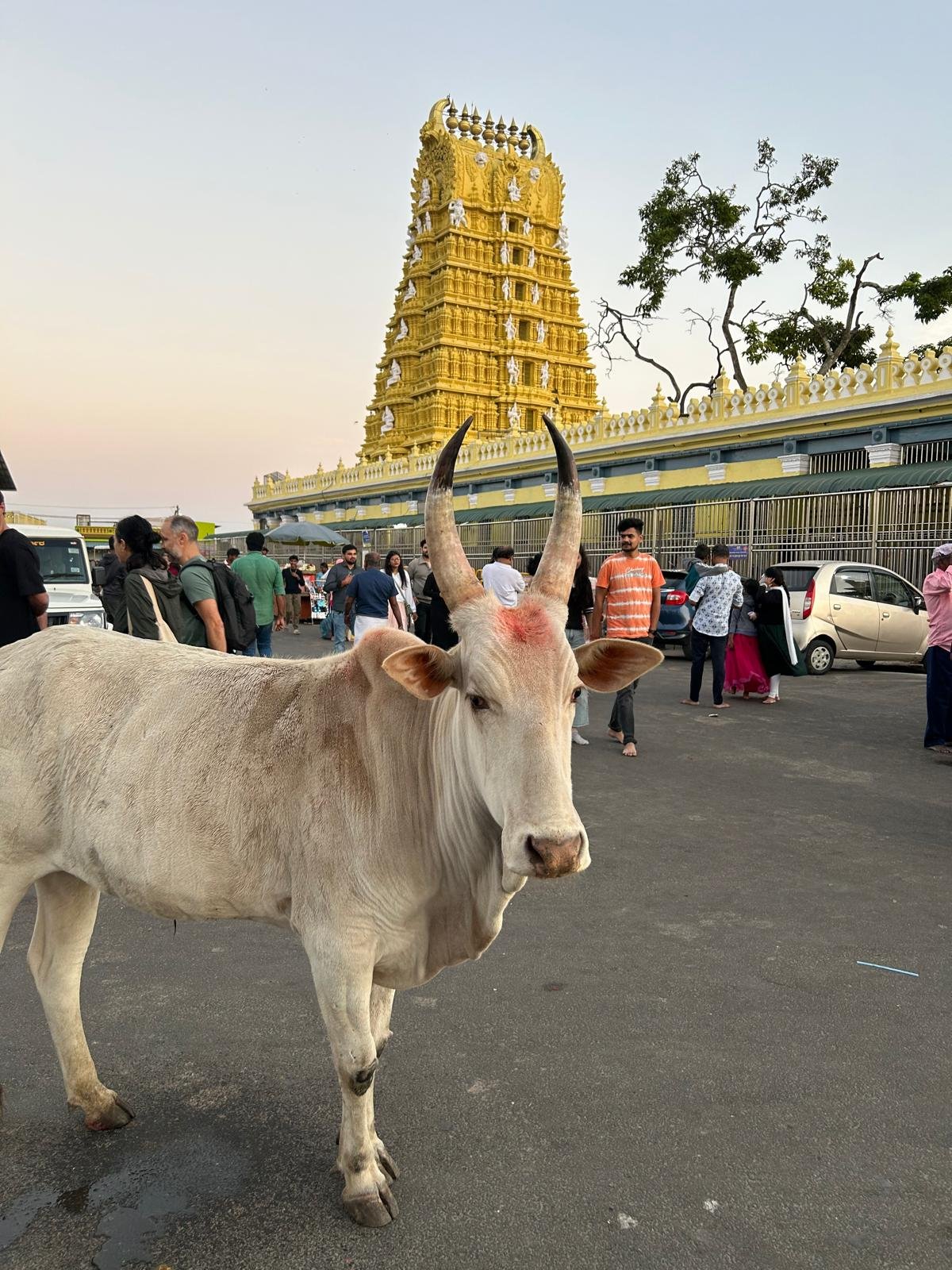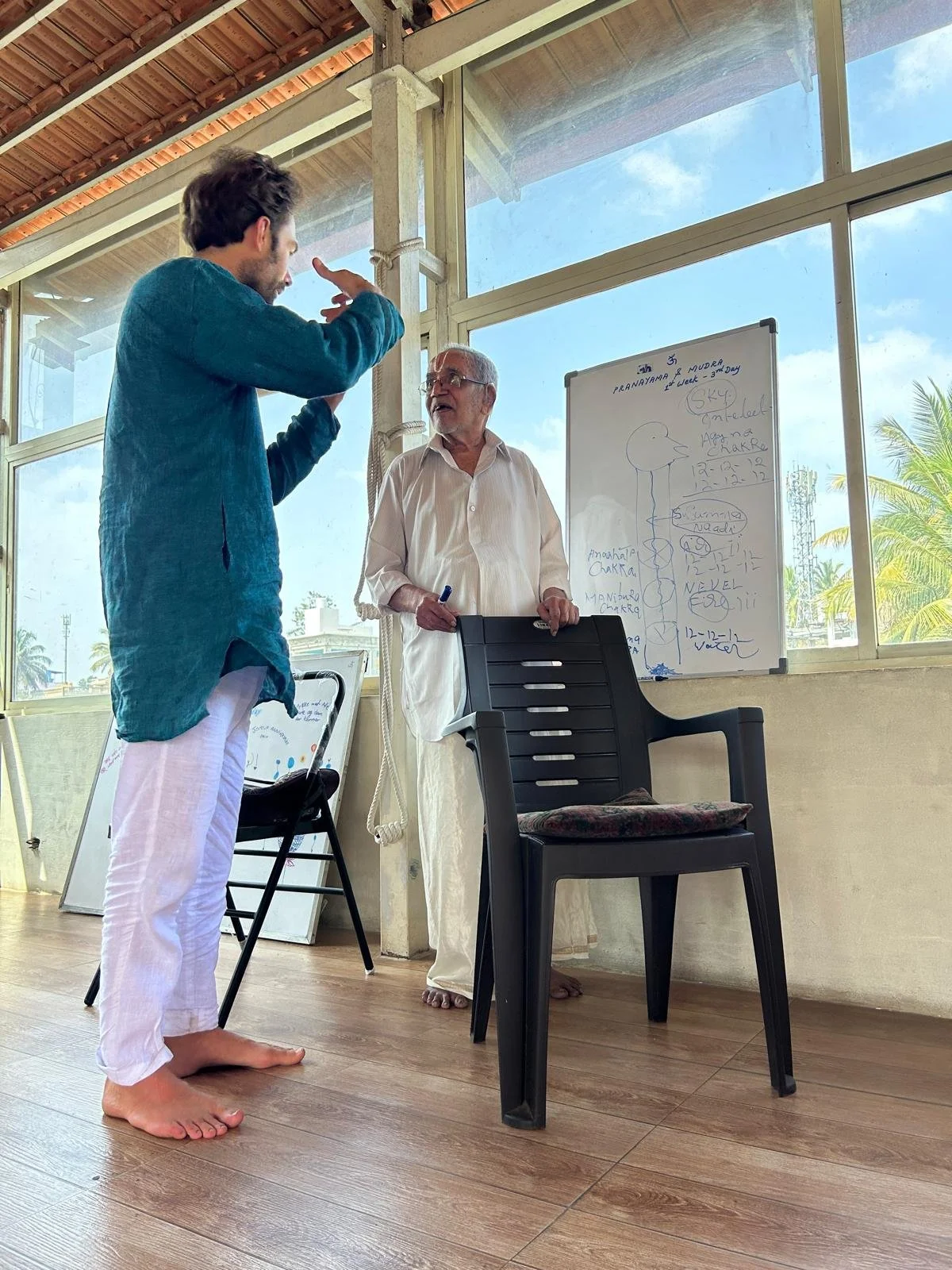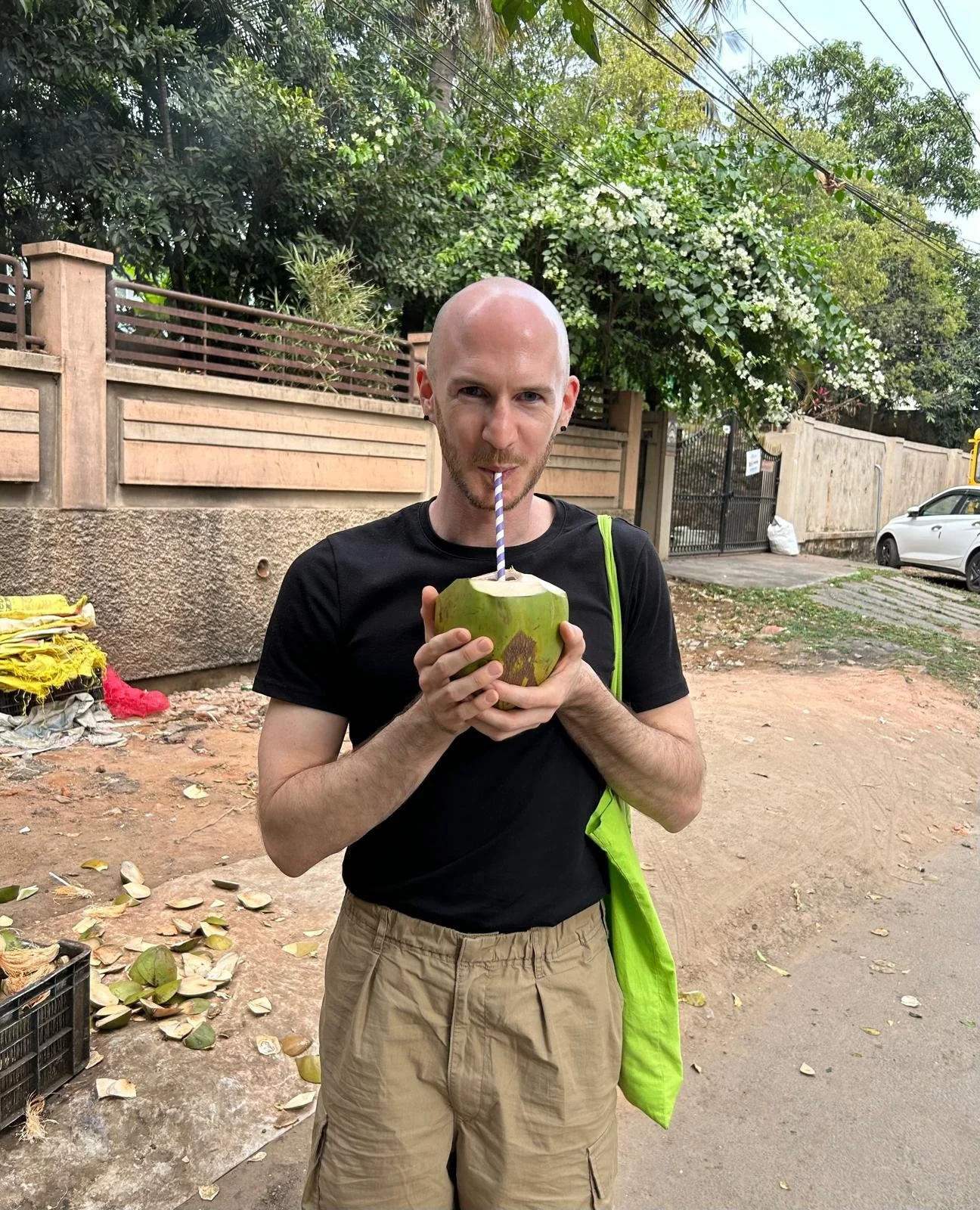My first week in India
Studying with a 98 year old guru and learning how to cross a street
Namaste from Mysore, a city in the south of India that doesn’t really have anything newsworthy about it—except for its vibrant yoga scene. It was here that Patabi Jois, a student of the great yogi T. Krishnamacharya, started teaching the Ashtanga Vinyasa yoga method.
Just a couple of years ago, I wasn’t at all interested in the idea of going to India. I didn’t really have any opinions about that country that covers a whole sub-continent, where cows are holy, and people bathe in and drink from a sacred river that’s been named the world’s most polluted river. I had already been practicing yoga, but everything I wanted to get out of putting my body into bendy shapes seemed to be just within reach—no need to go to India.
That all changed when I got more serious about my Ashtanga practice and began to explore the universe that lies beyond the physical aspect of yoga. (I’ve written about this in an earlier post.) In my quest to go deeper, I was listening to podcasts, reading books, and bringing up Ashtanga yoga in every possible conversation (sorry to my friends who all know that it’s hard for me to shut up about it). One word came up again and again: Mysore, the birthplace of the Ashtanga Vinyasa method.
So, when I had finally left my job, I knew the time had come to visit this city. Making that decision, though, wasn’t easy in the beginning. I had already started teaching yoga in Barcelona, and to leave, I basically needed to quit. Something always seems to hold us back. That’s when, in September, I decided to take the leap and buy a ticket to India.
After spending Christmas in Austria, it took me only a three-hour train ride, a seven- and a three-hour flight, and a four-hour bus ride to get to Mysore. I arrived late on a Friday evening, and while I have the feeling that airports are more or less the same around the world, full India hit me at the Mysore bus station. It was already dark, there were so many people on the streets, and everything was set against a backdrop of city noises and penetrating smells. I didn’t even have time to figure out how to get to the yoga shala where I was staying when I was already in a rickshaw with my backpack and a huge suitcase. I still don’t know how they managed to fit everything into that rickshaw, and I would have preferred to take a taxi, but it’s really hard for me to say no.
A good friend from Barcelona had recommended a place in Gokulam, Mysore’s yoga neighborhood, which included accommodation, food, and yoga classes—and that’s where the rickshaw brought me. I was incredibly glad to finally arrive after what had been over 24 hours of traveling.
A beautiful cow in front of Shri Chamundeshwari Temple in Mysore, India
My first day in Mysore was really eventful. I met a couple of people at the yoga shala, and after a morning class, they took me to see the Mysore Palace and to hike up 1,000 steps to the Shri Chamundeshwari Temple. I still can’t believe I did all that on my first day in India.
On my second day, I mainly relaxed and rested. I was really tired from traveling, and although some rest was what I needed, I also got a bit bored and anxious about how I would be spending my time in Mysore. As so often since I left my corporate job, I felt the need to control everything, to organize everything, and to make the most of my time, just as an excuse to take time off from work and do what I wanted. This is really one of the greatest lessons I’m learning. Not everything has to lead somewhere. Not everything has to be productive or have a greater goal or objective. Why not just enjoy something for what it is?
The week started with another full day of activities. In the morning, I learned that the shala where I was staying offered mostly led Ashtanga classes. Sorry, I know this is getting into some nerdy Ashtanga yoga stuff, but let’s just say this is not what I was looking for. I wanted a traditional Mysore-style program (I mean, that’s why I came to Mysore). But I decided to keep my eyes and ears open and tell everyone I met that I was looking for a different teacher. Something would come up. As they say, when the student is ready, the teacher will appear.
Guruji BNS Iyengar, teaching Pranayama and Mudra at 98 years old
After breakfast, I went to my first Pranayama class. I’ve written in a previous newsletter about the 8 limbs of yoga, and Pranayama—the practice of working with the life force and the breath—is the fourth limb of traditional yoga. This is what I wanted to study with BNS Iyengar, a 98-year-old teacher and one of the last living students of the great T. Krishnamacharya. I’m truly in awe of how much energy this man still has at his advanced age. I’m doing two courses with him: one in Pranayama and one in Mudra, the teachings of yogic energy seals. Seeing BNS Iyengar, almost 100 years old, teaching two full hours every day also makes me think that maybe it’s not necessary to stress so much about what I’m going to do once I’m back, about whether it will be possible to earn money just being a yoga teacher. Sometimes, all you have to do is give it time.
After those classes, I have time for a quick lunch, and in the early afternoon, I take a philosophy course on the Yoga Sutras with Arvind Pare. I’d already started reading commentaries on the Yoga Sutras back in Barcelona, but having them explained by a teacher who knows them by heart and chants them in Sanskrit without any book or notes in hand is truly impressive. It allows me to understand them in a depth I didn’t think possible back in Barcelona.
Asana, Pranayama, Mudra, and Philosophy – this is how my days looked during this first week. On Friday, one guy from the Pranayama class asked me what I’m doing in Mysore for fun. “Sometimes I have a coffee,” I replied. It’s true that my life has become a lot simpler here. I focus on my classes and spend a lot of my free time reading or revising the material from my courses—and I’m really grateful for this opportunity. It feels a bit like going back to uni (or like being a monk who solely focuses on studying). But in the end, that’s what I’m here for: to dive deeper into yoga.
This is my first coconut in 10 years! The last one I had was in Brazil.
This has been a long blog post, and I hope you managed to stick with me. Next week, I want to write about how I finally found a traditional Mysore program and my first week of studying with Vijay Kumar.
Let me know if you think a weekly newsletter is a good idea, and please let me know in the comments if you want further explanations on any topics I’ve touched on.
Lots of love!
Gregor
P.S. I was proud of myself for coming up with the subheadline about learning how to cross a street in India, only to realize I didn’t mention that at all in the newsletter. My yoga teacher called Mysore “India for beginners,” and I have to say, being here hasn’t been particularly challenging. Sometimes it’s loud and chaotic, but there are also plenty of tranquil and peaceful spots—like the many hipster coffee shops and yoga stores.
People here generally walk around in sandals or flip-flops and always take off their shoes when entering a building. You can usually tell how long someone has been staying in Mysore by how dirty their feet are! All in all, I’ve adapted quickly to life here, though I’ve noticed I sometimes get stressed when I’m tired and spend too much time out on the streets. There’s just so much to take in.
That said, the biggest challenge for me so far—and this really shows how European I am—has been learning not to throw any paper into the toilet. What a challenge!


